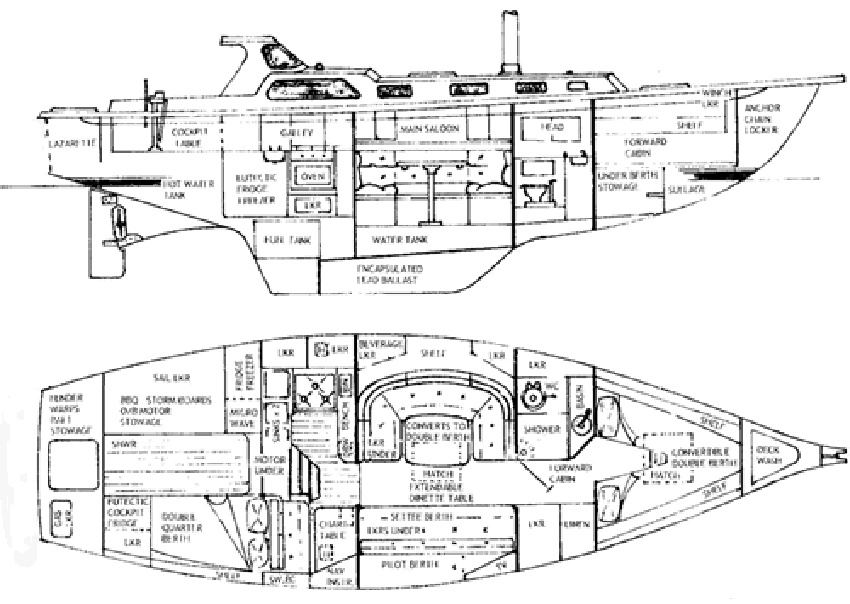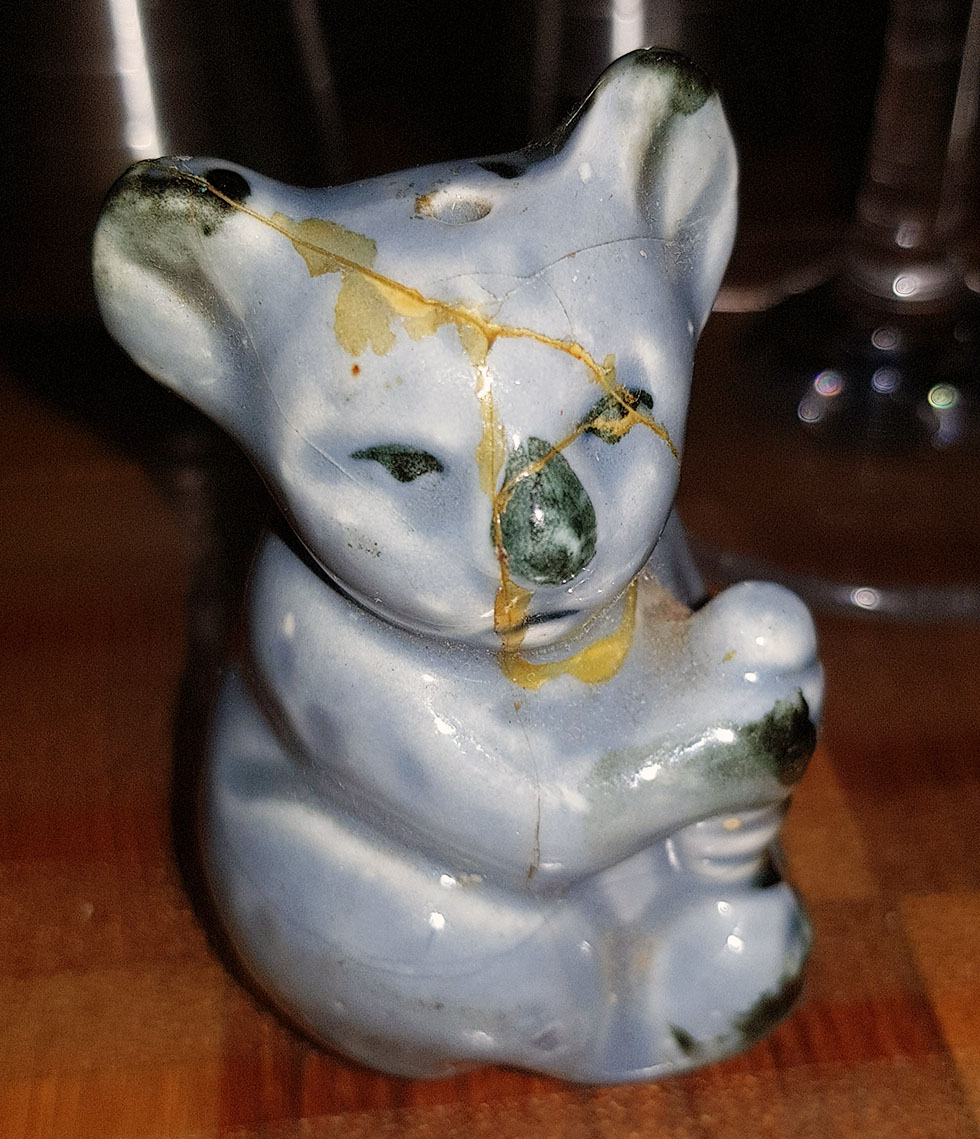There’s no denying we live in a world centered around consumption. These days it seems there’s a “solution” for everything; you just need to buy it.
Across the modern world people have made “accumulation” a life-long goal which is pursued with zeal. Their homes become shrines to stuff. Sometimes, people wake up and realise they are drowning in stuff and that all this stuff is not contributing to their happiness. People turn to websites like Becoming Minimalist to declutter.
For me, the point isn’t to have the most. It’s to have what you need for your purposes.
We’ve come across cruiser’s who have moved aboard and bought with them everything they had in their house, including the kitchen sink. Stuff takes up physical space, and on a boat, space is at a premium. These people spend lots of time shuffling stuff from one end of their boat to the other just to dig into lockers and get out more “stuff.”
When we moved aboard over 8 years ago we condensed our lives and a typical three-bedroom Australian suburban house into a 33-foot sailing boat. How did we decide what we needed to bring with us and what we didn’t?

Like most people we used the “vital” rule – “have we used this item in the last three months, and if we didn’t have it, would our lives be negatively impacted by its absence? Is there an alternative tool/item we already have on board that can do the job?” For example, we have a very nice block of kitchen knives – a set of six beautifully crafted and weighted blades. Each has a specific purpose. We love to cook, and good knives are essential tools. A garlic press while nice to have, is not needed. We can crush and finely dice garlic with one of the knives in little time, so off went the garlic press.
If you feel you need a reset or are moving aboard for the first time, here’s how we decided what we bough with us and what we left behind.
Getting Serious
Take EVERYTHING off the boat. Empty all the lockers and sort out the stuff into related piles on the dock. It is preferable to do this before moving on-board full time, but if you’re already living on-board, make a weekend of it. It will take that long!
We grouped things into “house and social,” “boat operations,” “safety gear,” “food and consumables,” “bathroom,” “personal items,” “clothes” etc. Our food and consumables group were then broken into subgroups: “unopened items,” “opened items decanted into airtight containers,” “tins and jars,” “fruit and vegetable stores” etc.
With everything out of the boat we cleaned every locker and identified areas that were being underutilized in terms of space. Could we build a little shelf to use nooks and crannies? We identified which lockers are easiest to get to, and which ones we needed to “dig” to get to (lockers under settee cushions, for instance.) With a boat plan printed out, we then designated lockers that would have a daily and enduring use. We gave these names, so when we ask someone to pass us something, we can say “can you get the small extension lead out of house and social?” and they know exactly where to go. There are lots of nooks and crannies on a boat and if you don’t follow a systematic “plan” you’ll be that cruiser that spends more time rummaging around and scratching your head looking for stuff and saying to yourself in a frustrated low voice “I saw that the other day, where is it?”
As things went back on-board, we kept a list. For example:
House and Social
- Extension leads
- Games, Playing Cards, Chess Pieces, Draughts Pieces
- Cameras
- Popcorn maker
Getting stuff back onto the boat became quite the conversation. As one person on the dock handed an item over the rails, the other person took it and put it in its designated locker. Conversations, nay impassioned pleas sprang to life. Was this really necessary? As you’d expect, some things passed this final scrutiny, others did not.
Exceptions to the rule
It’s important to note there should be things on-board that serve no purpose but have personal value. This is your house after all. I carry a small porcelain koala bear that my grandmother gave me when I was just five years old. It is my most prized possession and I take him everywhere. He has his place when we are not passage making next to my bed. When underway, he lives in the grab bag.

All essential safety gear had to be kept in a place that was readily accessible and ready for rapid, unhindered deployment. During this exercise, it’s a good time to check everything is working and in good order.
Eternal Vigilance
Now that you’ve create your ideal living space, free of clutter with everything in its place, eternal vigilance is the true price of freedom – freedom from “the clutter of stuff.”
As our life aboard went on, we suddenly found “things” creeping on board that didn’t meet the “vital rule” test. Little bits and pieces accumulated on the nav-desk. Things put in lockers started to be crammed in with the door shut against them, rather than placed in an orderly fashion. We had to come up with a better idea. That idea was “one thing on, one thing off”.
Here’s how it works. Once you have your ideal life at your fingertips if you bring on something new to the boat, something must go. No exceptions. An example of this is when we bought our new Surface tablet computers. Our old laptops had to go. We reformatted the hard drives and gave them to less-fortunate people we either knew were in need or donated it to a volunteer organisation to do with it as they saw fit. The most important thing is that it was not left on the boat to be endlessly shuffled from one part of the boat to the other.
When we get a new phone, same deal. The old one goes off to a new home. A new book? The old one goes into the local public laundry to find a new reader. New coffee mugs – off go the old to find a new home. Many things that you no longer need can be re-purposed by donating it. It doesn’t need to be put into landfill.
Boat fridges are like black holes
My fridge, like on most boats, can quickly become a disaster if things don’t follow the principles or organization and the “one thing on, one thing off” rule. Planning your meals means you can bring some order to what you want to eat, what you need to buy and ultimately, how you are going to store it. Like our lockers on the boat, parts of the fridge have “zones” where you can put your hand down into the abyss and pull out the butter, because that’s where it always lives. As we buy a new block of butter, then new one goes under the currently open one, but it’s in the same zone so easy to find. Interestingly, we never seem to find it hard to find the chocolate.
One thing on, one thing off as a companion to good organisation is a cruising live-aboard habit that will make your minimalist lifestyle feel full and free without the clutter of stuff. If you think you’ve missed anything, set sail for the afternoon and put your boat on a 30-degree heel to wind in a sloppy sea.
They don’t call it a “shakedown” cruise for nothing!
Here's one thing you should always have on board!
NORTH QUEENSLAND'S ANCHORAGE ENCYCLOPAEDIA
Discover The Coconut Coast: Anchorages of the Townsville, Cairns, Cooktown and Peninsula (Cape York) Coasts from Gloucester Island in the northern Whitsundays all the way north to Princess Charlotte Bay. Experience counts. Cruise with local knowledge.
